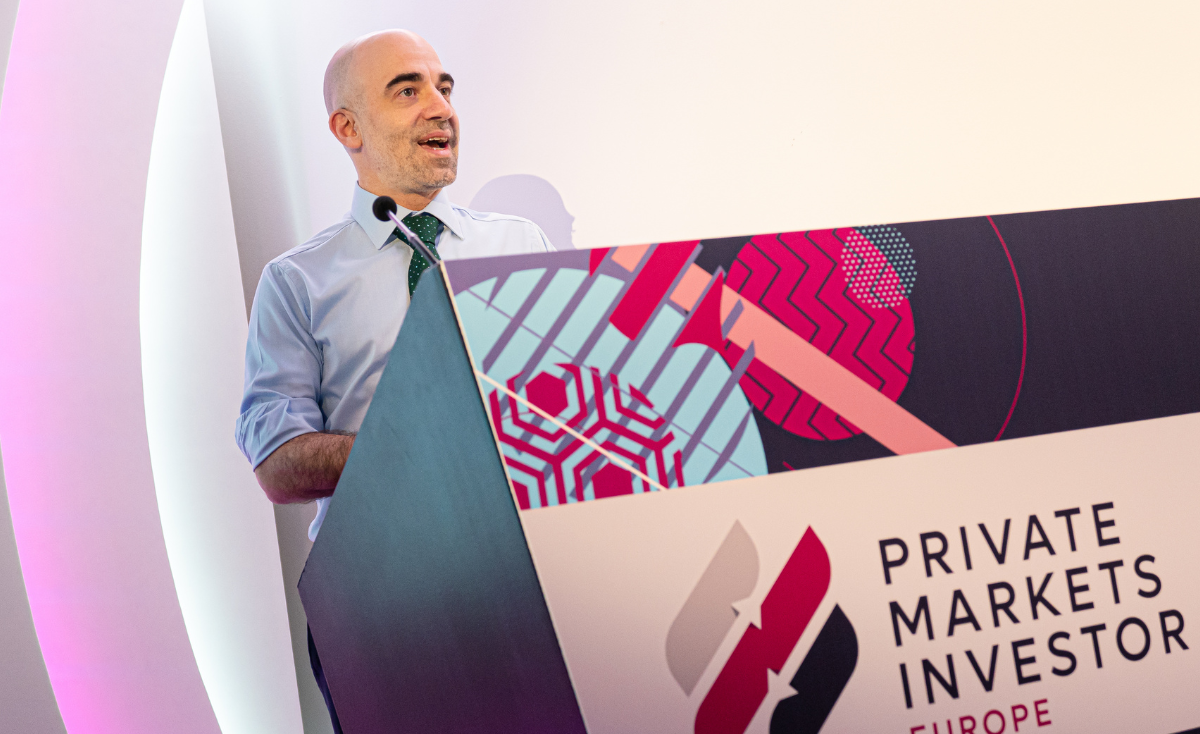 Matt Courey, Chief Operating Officer at AlbaCore Capital Group.
Matt Courey, Chief Operating Officer at AlbaCore Capital Group.
Carbon-conscious investing (CCI) is a facet of the industry that requires stakeholders to be in sync with the data and tools they use so that progress can be made.
Matt Courey, Founding Partner and Chief Operating Officer (COO) at AlbaCore Capital Group – and the opening keynote speaker at day one of Clear Path Analysis’s Private Markets Investor | Europe event in London – explained that CCI relied on good data from vendors and good management. Courey presentation was titled, “Carbon Conscious Investing: The Solution to All of Your Problems?”.
Day one of the conference focused on the Private Market Operations Forum, covering operations, technology, and data challenges that fund groups face in their investment operations whilst managing and attracting large inflows of capital.
Is CCI the future?
Courey highlighted that COOs were in a unique place when it came to facilitating the changes required in an ESG-focused world – as they oversaw many areas of a company’s data operations, investment strategy, and organisational culture. “COOs are uniquely positioned to look into carbon conscious investing because they are used to anticipating the future, working together with other teams in the company, and fostering that cooperation in the business,” said Courey.
This point was duly highlighted by the recent Intergovernmental Panel on Climate Change (IPCC) AR6 Synthesis report, which showed that different parts of the world are being affected at a disparate rate and level by climate change. Courey said this was part of the reason why asset managers must be more engaged with and conscious about this process.
“Climate change is like the internet in the 1990s. It’s going to create opportunities for people to make money and lose money.”
“Climate change is like the internet in the 1990s,” he said. “It will affect everyone and change how everything works. It’s going to create opportunities for people to make money and lose money,” he added. “Carbon conscious investing is also important because performance evaluations are important.”
Courey continued that one of the main reasons carbon-conscious investing is critical is because of the scope of regulation in portfolios for asset managers – especially those such as Sustainable Finance Disclosure Regulation (SFDR) and Task Force on Climate-Related Financial Disclosures (TCFD).
Implementing CCI due to these regulatory changes, he said, would have ancillary benefits such as improving engagement with clients, bolstering corporate resilience, and strengthening investment decisions.
He praised the forward-looking aspects of these regulatory frameworks, but warned that the “pendulum could swing” if policy became too stringent or hindered innovation and development.
Private markets in CCI
Courey also concentrated on the important role Private Markets can play in accelerating the low-carbon transition – ultimately helping COOs to improve risk management, operational efficiency, client servicing, investor reporting, data strategy, and product development.
“You can’t manage unless you understand and measure. The process starts with quantifying the footprint of your portfolio and verifying it through an external partner or tool.”
He urged those in the field to focus on three areas: 1) understanding the science and technology around climate change in private markets investing, 2) measuring climate footprints, and 3) managing these elements.
“You can’t manage unless you understand and measure,” Courey said. “The process starts with quantifying the footprint of your portfolio and verifying it through an external partner or tool.”
It is especially critical, he said, to create a common language that enables a clear discussion of portfolio attributes – the positive and negative. He honed in on several areas where operational teams could improve their procedures to achieve the necessary results:
- Measuring annual carbon footprint in tonnes
- Using the “WACI”, or the Weighted Average Carbon Intensity, measured in tonnes of Co2 emitted per $1 million of revenue
- Carbon footprints per million invested, or the allocation of total carbon emissions to investors based on ownership concerning portfolio value
Measuring the data
Courey said that whilst there was a long road ahead, getting the necessary data was the first step. “We’re often stuck on ESG when we don’t have the data, but in this area we have nearly 20,000 companies’ data,” he continued, adding that there are several external databases that exist.
These databases include information on industry and geography, which could effectively be used to create a peer picking tool, thereby filling in the gaps for companies that don't self report emissions data.
Courey suggested that when organisations begin to assess annual footprints based on this information, they can essentially improve their entire business.
Market engagement and immaturity
Whilst there is more available data and resources than often acknowledged, the field is still growing, Courey said – especially when it comes to carbon offsetting techniques.
Carbon offsetting is a programme that funds solutions to reducing carbon emissions. At a national and governmental scale, it reduces emissions more quickly than an individual company does by calculating and offering plans designed to offset carbon.
“The offset market is immature, and it needs folks like us to help it grow. We can take advantage of [our] unique position to help make it happen.”
“The offset market is immature, and it needs folks like us to help it grow,” said Courey, noting that experienced companies could help the process along if they became involved. “There are aspects that aren’t working at a high enough level, so we can take advantage of the fact that we are in a unique position to help make it happen.”
Attracting talent
Courey also said that CCI was proving a key growth area that attracted young and diverse talent. “Young people want to know that companies are going above and beyond on ESG, and that it’s not just box-ticking,” he explained. This area is especially important to the graduates coming into the workforce, he added, who were raised in an era of anxiety about climate change consequences.
This pool of talent was motivated by a desire to know that the company they worked for was doing good, which extended into other aspects of ESG outside climate change – such as broader social projects – that companied needed to embrace.
“It’s not about being a bad person, but [CCI and other ESG measures] are often not prioritised, and [they] cost money.”
Whilst it can sometimes be tricky to get holistic data on companies that are operating in private markets, it is still extractable, said Courey. “It’s about matching time and resources with priorities,” he added. “It’s not about being a bad person, but [CCI and other ESG measures] are often not prioritised, and [they] cost money.”
He added that there can be a misconception about how much time and money these initiatives will take – and an “underappreciation of all the benefits they offer COOs to improve operations”.
It is only when the data is properly extracted and prioritised, Courey concluded, that the industry will be able to tap into the true potential of carbon conscious investing.
Please Sign In or Register to leave a Comment.
SUBSCRIBE
Get the recent popular stories straight into your inbox







